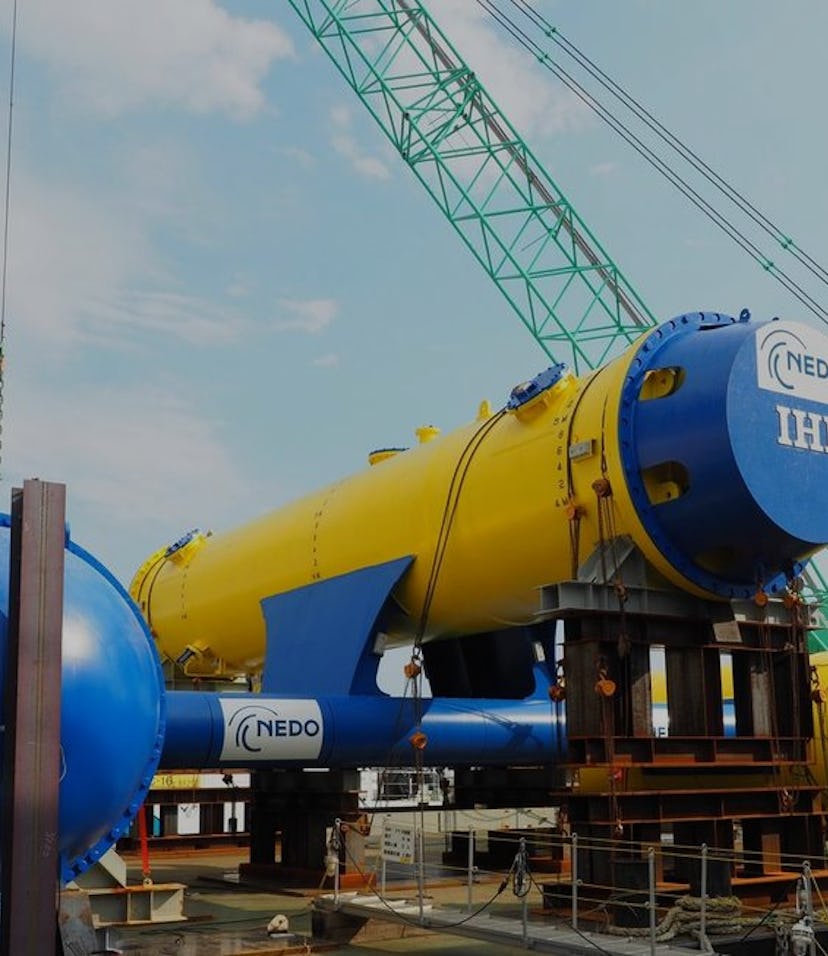Energy
Japan hopes huge underwater turbine will supply most of country's energy
Japan wants Kairyu, a 330-ton turbine, to leverage deep-ocean currents for generating power by 2030.

Japan is turning to the ocean in a bid to augment its renewable energy production using a 330-ton turbine that harnesses the power of deep-sea currents. Called “Kairyu,” the plan is to build a 100-kilowatt-class generator that transforms Japan’s clean energy supply. If all goes well, Tokyo-based company, IHI Corp, hopes to generate energy with the system in the 2030s. Wind varies, and the sun sets, but deep-sea currents provide steady streams of renewable energy.
Water world — The device, which has been in development for more than a decade, has two counter-rotating turbine fans which rotate in opposite directions to cancel rotary torques. A central section of Kairyu controls its buoyancy. It’ll be outfitted with anchors to keep it in position — that is to say, more than 30 meters underwater and in the midst of the powerful Kuroshio Current, an organized flow of water off the coast of East Asia.
The Kuroshio Current is part of the North Pacific gyre, the clockwise ocean current that carries water from East Asia across the Pacific and down the western coast of North America, and back. The massive swirl of ocean water is powered by “winds, gravity, and variations in water density in different parts of the ocean,” according to the NOAA. Kairyu is designed to harness the energy from deep circulation, not surface circulation, and transmit the power via underwater cables that lie on the seabed.
In recent tests this year, Kairyu was able to generate around 100 kilowatts of stable power and IHI Corp hopes to increase output twenty-fold, generating as much as two megawatts.
Bloomberg reports that the Kuroshio Current could potentially generate as much as 200 gigawatts, or 60 percent of Japan’s present generating capacity, according to estimates by Japan’s New Energy and Industrial Technology Development Organization.
Sounds great in theory — The Kairyu device still needs further development before it’s permanently installed underwater (which is a task that’s easier said than done, especially when the object weighs more than several space shuttles). It won’t be easy, and it won’t happen soon, but it’s possible that Kairyu will eventually provide the lion's share of Japan’s energy needs. The announcement marks an exciting development in clean energy. The International Energy Agency, an intergovernmental organization with 30 member-countries, estimates that the worldwide percentage of energy from combustible fuels like coal and oil is still a whopping 63 percent.